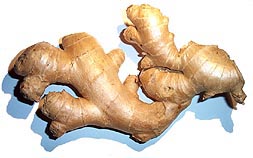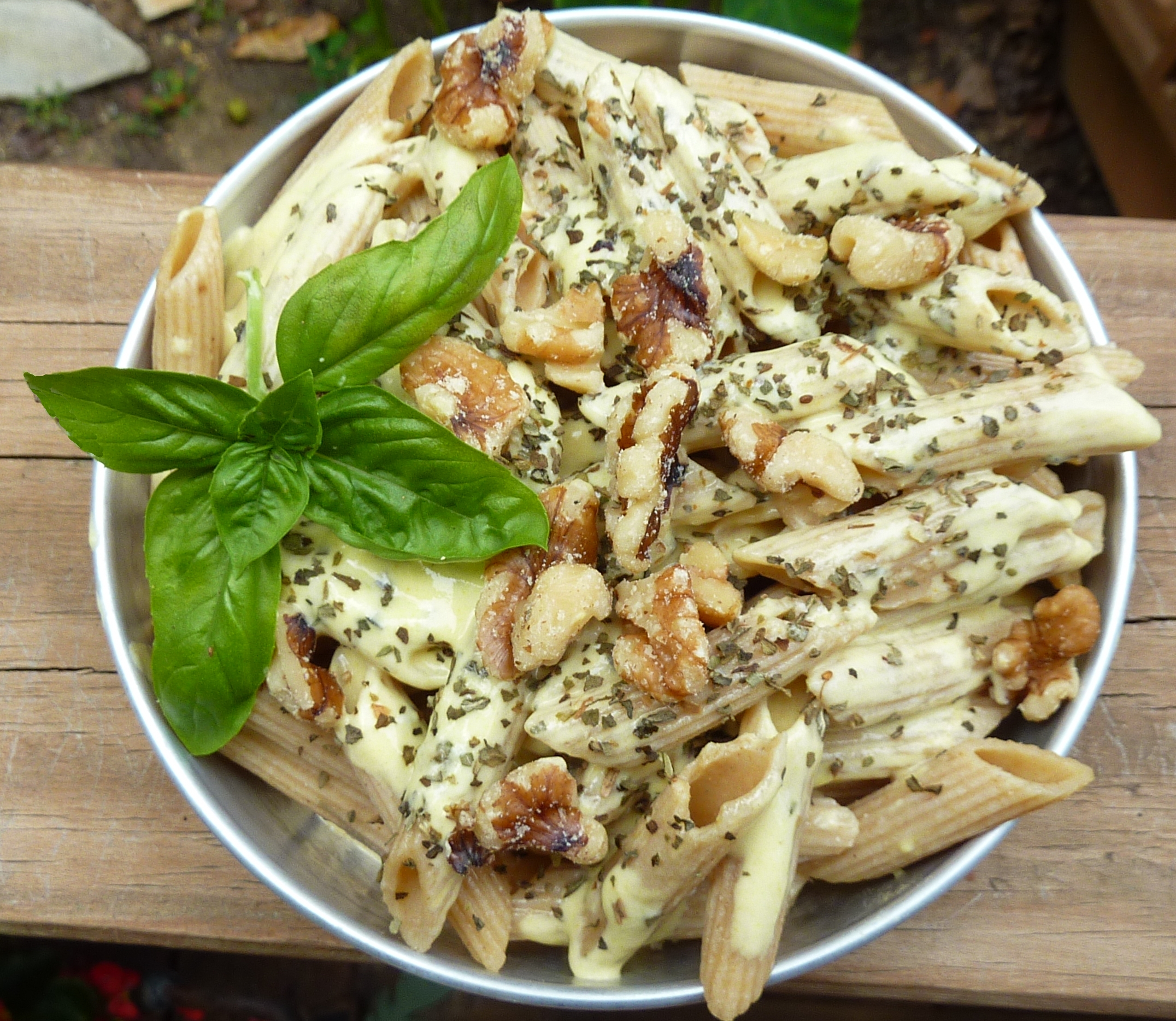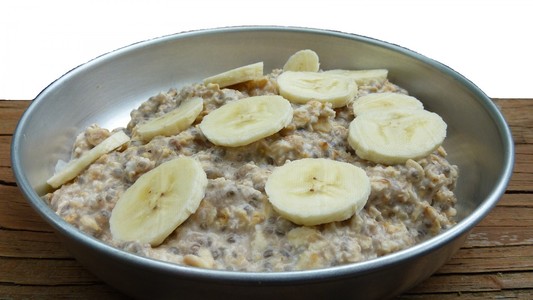Whether you are experiencing sore hips or knee pain from hiking, an injury such as a twisted ankle, or a severe headache, there are certain foods you can eat to ease the pain. In this article, you’ll find a list of foods that contain potent anti-inflammatory compounds to help counteract inflammation and soreness in the body.
In The Curious Adventurer, we mentioned how eating right plays an enormous role in your ability to finish a thru-hike. Pain is undoubtedly a common ailment experienced by most thru-hikers. Fortunately, nature has provided us with plenty of trail-worthy foods to help minimize and alleviate inflammation and pain.
This doesn’t mean you should toss “vitamin I” (aka Ibuprofen) from your medicine kit; keep a reserve supply for severe pain. However, if you eat enough of the anti-inflammatory foods discussed here, you may never need an over-the-counter (OTC) pain reliever. Or, combine these foods with your OTC drug for a double whammy.
 First, what is Inflammation?
First, what is Inflammation?
Inflammation is derived from the Latin word “inflammo” meaning “I ignite.” The term characterizes the burning or heat sensation characteristic of inflammation. Inflammation is the body’s response to harmful stimuli, such as irritants, injury, and infection. The signs of inflammation are pain, a feeling of burning, redness, swelling, and loss of function.
Inflammation can either be short-term (acute) or long-term (chronic).
- Acute inflammation is the body’s first response to damage caused by physical injury. Examples of acute inflammation include an insect bite, hives, an injury such as a stubbed toe, burn, cut, or splinter. A healthy body can usually heal itself from acute inflammation within a few hours or days.
- Chronic inflammation happens when the body is continuously exposed to irritants, leading to suppressed immunity and an increased risk of severe illnesses. Prolonged inflammation disrupts the body’s normal biological processes. It leads to a weakened state and the potential for cells to mutate and attack the body, for example, autoimmune diseases such as rheumatoid arthritis, celiac disease, and IBS.
The process of inflammation occurs in the following way:
First, you get a splinter. This causes cellular damage and allows foreign pathogens to enter the body. Even a tiny splinter can carry billions of bacteria. Pain serves as a signal indicating this microbial invasion. In response, mast cells begin releasing histamine and cytokines to alert the body to the damage. Small blood vessels then become leaky, allowing immune cells to reach the injured area.
At the same time, neutrophils start attacking the bacteria and damaged tissue. Lymphocytes enhance the healing power of the immune system. As the bacteria are destroyed, platelets and other substances form clots to close the wound. This is a normal and healthy inflammatory response.
However, issues can arise when inflammation becomes chronic, often caused by poor nutrition, long-term stress or illness, or an underlying persistent infection. In some cases, immune cells may mistakenly attack healthy cells in the body. Fortunately, certain foods can help support the healing process.
Many plant-based foods are naturally anti-inflammatory. Consuming these foods regularly will help with acute inflammation and help prevent chronic inflammation. Here are a few of the best anti-inflammatory foods and spices that are also trail-worthy.
The Best Anti-inflammatory Foods for Backpacking & Traveling

Turmeric
Ever wonder why prepared mustard is yellow? The color comes from a spice called turmeric. Turmeric, a member of the ginger family, is a golden yellow root that is native to India. It is commonly dried, ground into a fine powder, and sold as a spice. It has a long tradition for its healing properties, use as a seasoning (especially in Indian curries), and as a skin dye for important ceremonies. Turmeric is a complex medicinal food with many known active beneficial constituents.

Why it works for pain & inflammation
Turmeric contains a mixture of phenolic compounds; the key one is curcumin, a potent anti-inflammatory substance. This compound inhibits cyclooxygenase-2 (COX2), an enzyme in the body that becomes elevated with inflammation, especially from joint pain and stiffness caused by arthritis. Some people find turmeric capsules offer better relief for their osteoarthritis than the drug Celebrex.
For pain, curcumin is as effective as Ibuprofen without toxic side effects. Common OTC non-steroidal anti-inflammatory drugs (NSAIDs), such as aspirin, Ibuprofen, and naproxen, can cause adverse gastrointestinal side effects, increased heart failure, or inhibited blood clotting. Turmeric has no such side effects. Curcumin is also antiviral and helps speed up the healing of a wound. Before adding a band-aid, you can dab it directly on the injury as an antibacterial.
Turmeric may provide further pharmacological benefits. It has demonstrated positive results in preventing health conditions such as Alzheimer’s, MS, and cancer. Research is underway to study how these complex synergistic interactions work together to make it a valuable herb.
How it tastes
Turmeric spice has a warm aromatic zest and a mildly bitter and peppery flavor, reminiscent of ginger.
Food use
Add about one teaspoon per day of powdered turmeric with food. Increase your intake by adding an extra squirt of mustard on sandwiches. Start sprinkling turmeric spice on rice, soups, pasta, eggs, and potatoes. Add it to hot teas. Add turmeric with black pepper to enhance the absorption of curcumin. Add up to 5 teaspoons of turmeric per day for more severe pain.
Outdoor Herbivore meals containing turmeric

Ginger
Ginger is another underground rhizome in the same plant family as turmeric. Beneath the outer bark is the edible striated, creamy inner flesh. Ginger is an exceptional antidote due to its antiseptic properties and pain-relieving qualities. It is one of the oldest and noteworthy spices, long prized for its sharp flavor and stomach-soothing qualities. Gingerbread making started during medieval Europe and its inclusion to beer or ale (ginger ale) from 19th century England. It remains the go-to treatment for motion sickness for many people and frequently outperforms the OTC drug Dramamine.
Ginger is commonly used fresh or dried as a spice.
Why it works for pain & inflammation
Ginger is a potent pain reliever. A study by the University of Georgia showed ginger consumption could reduce muscle soreness by up to 25 percent for an entire day. Like turmeric, ginger contains COX-2 inhibitors that suppress these pain-causing enzymes in the body during inflammation.
Ginger contains chemicals called gingerols and shogaols that soothe an upset stomach and aid digestion. It improves digestion by increasing wavelike muscle contractions, called peristalsis, that move food through the intestine. These substances also suppress coughs, relieve pain, and reduce fevers.
Zingerone, the active substance released in cooked or dried ginger, destroys E.coli and relieves diarrhea associated with it.
How it tastes
The flavor of ginger varies depending on where it is grown. Typically ginger has a bright, citrusy aroma and a spicy-sweet, peppery flavor.
Food use
Add about one teaspoon per day of powdered (2 TB of fresh ginger) with food after hiking or exercise. Increase your intake of ginger by adding the spice to oatmeals and desserts, such as chia seed puddings. Add candied ginger to trail mix or sprinkle dried ginger on raisins or cranberries. Sprinkle it liberally over rice, pasta, and soup. Stir it directly to hot or cold water, tea, or coffee to soothe stomach distress or pain. Drink ginger ale when in town – check the ingredients to make sure it contains actual ginger (many do not).
Outdoor Herbivore meals containing ginger

Garlic
Garlic has been both a food and medicine for thousands of years. Garlic is part of the allium family of vegetables, including onion, leeks, and scallions. The health benefits of alliums are outstanding. Their high concentration of antioxidants and flavonoids stimulate immune response and reduce inflammation. But garlic takes the prize for its broad-spectrum health benefits, including antibacterial, antiviral, anti-inflammatory, and antifungal activity.
Why it works for pain & inflammation
The star compound in garlic is Allicin, released when garlic is cut or crushed. The allicin has antibacterial properties equal to a weak penicillin.
Garlic (and other alliums) contains a high amount of sulfur, the substance responsible for its pungent smell. Sulfur is beneficial for healing – it is an oxygen carrier and works by carrying oxygen in the body directly to infected areas; since germs can’t live in an oxygen-rich environment, the infection clears. As sulfur compounds are metabolized in the body, they form into allyl methyl sulfide, absorbed into the bloodstream and lungs, escaping through exhaled air and sweat. Thus, the cause of garlic breath.
Garlic contains other properties that help decrease blood pressure, detoxify chemicals, improve circulation, prevent tumors, and boost immunity. Hence, it is useful against everything from fighting off the common cold to athletes foot to worm infestations. Develop a funky fungal infection on your foot while hiking? Eat more garlic! Since garlic is excreted from our sweat, it can work from the inside out.
How it tastes
Spicy. Allicin is the substance that gives raw garlic the “hot” taste sensation on the tongue. The aroma released while cooking garlic helps too — it smells as sensational as it tastes. Are your taste buds whetted yet?
Food use
Cooking does not diminish the protective effects of garlic or other alliums. Boost the flavor of spreads or dips, rice meals, pasta, potatoes, and bread by sprinkling garlic powder or garlic salt. Or, look for backpacking meals that contain garlic. Also, forage for wild likes (ramps) while on the trail – they are abundant across most of the United States. You can add fresh ramps directly to pasta and rice meals. How to identify wild leeks or ramps during different seasons and harvest in a sustainable way.
Outdoor Herbivore meals containing garlic

Chili Peppers
Chili peppers, native to South America, are one of the most widely grown peppers in the world. The fruits grow on small shrubs and vary in taste and potency.
Chilies contain a resinous substance known as capsaicin, which is a potent anti-inflammatory and painkiller. The burning sensation comes from capsaicin, a defense of the chili pepper to protect the seeds from being eaten by mammals. The burning sensation is painful to all mammals; however, birds are immune to the substance.
The effects of capsaicin vary depending on the type of pepper and the growing conditions. Red or Cayenne Pepper is one of the best suited for pain relief.
Why it works for pain & inflammation
Capsaicin triggers the body to release natural pain-dulling chemicals called endorphins. Besides potent COX-2 inhibitors, hot peppers also contain natural analgesic salicylates (aspirin-like compounds), pain relievers, and an anticoagulant. Peppers are also high in vitamin C, an essential nutrient that is often lacking in the diet of most thru-hikers due to their reliance on dried foods.
When applied topically, Cayenne is an excellent painkiller (capsaicin is absorbed through the skin). When the crushed peppers are smeared on the skin, capsaicin depletes substance P, a chemical in nerves that transmit pain sensations. You can purchase chili peppers, mash them, and apply the mash directly to the area of pain. You can also mix dried cayenne pepper (spice) with olive oil and apply it to the skin. Leave it on your skin and wrap it with a bandanna. Make sure you clean your hands before touching your eyes!
How it tastes
Chili peppers are oily and spicy. The varieties are classified according to their relative pungencies or Scoville units, with bell peppers containing the least amount of hotness and Habanero comprising the most.
Food use
Add more hot sauce and salsa to your diet! Look for foods that contain red chilies, red pepper, cayenne, chipotle, chili powder, jalapeno, bell pepper, or hot peppers.
Spicy foods are also particularly suitable for thru-hikers because they help prevent dehydration by stimulating thirst. It has a cooling effect in hot climates, making us feel warmer than we are, and inducing the cooling mechanisms (sweating, increased blood flow to the skin).
Outdoor Herbivore meals containing chilies

Omega-3 Fatty Acids

Omega-3’s act as a lubricant for joints. A diet high in these polyunsaturated fats oils will fight inflammation, especially in joints and cartilage. Omega-3 fats are found in flaxseeds, walnuts, cashews, chia seeds, hemp seed, olive oil, soy, and fatty fish. Be cautious if consuming fish–those that have the most healthy omega-3 fatty acids, such as tuna, also tend to have the most unhealthy toxic accumulations. If you must consume fish, the best choices are cold water fatty fishes such as anchovies, sardines, rainbow trout, and mackerel (until they become farmed/over-fished).
Note: Only plants synthesize omega-3 fats; fish concentrate the pre-synthesized oils in their bodies in the more efficient form, DHA and EPA; this form does not just come from fish, it can also be obtained directly from algae oil (likely a safer choice too). Plant sources high in omega-3’s include –
Chia Seeds are rich in Omega-3 and anti-inflammatory properties, and help reduce swelling and lubricate joints. It also offers an energy-increasing characteristic that does not act as a stimulant. Chia seed is also a good source of calcium. We highly recommend taking chia seeds for the trail. Chia seeds do not require refrigeration, do not need to be ground to extract their beneficial nutrients, and contain more omega-3 fat than flax seeds. One ounce (2 TB) of chia seed provides 165 calories.
Outdoor Herbivore meals containing chia
Walnuts are an excellent source of Omega-3 fats, one of the highest of any tree nut. While most nuts are high in monounsaturated fatty acids, walnuts contain a high amount of polyunsaturated fat in the form of alpha-linolenic acid (ALA), a type of Omega-3 fatty acid. Interestingly, a walnut bears a resemblance to the human brain, and its nutrients are excellent for brain health and memory. Walnuts are a good source of serotonin, which helps curb appetite and fight depression. Nuts are also high in calories. One ounce (about 14 walnut halves) provides 165 calories.
Outdoor Herbivore meals containing walnuts
Olive Oil, in particular, extra virgin olive oil (EVOO), provides a valuable source of antioxidants and various anti-inflammatory polyphenols. These substances reduce inflammation, especially in the cardiovascular system and joints. The polyphenol, oleocanthal, which is responsible for the peppery “bite” of extra virgin olive oil, has shown to reduce pain by inhibiting the activity of COX-1 and COX-2 enzymes. Olive oil is sold by grade, which represents the amount of processing. Extra virgin olive oil is from the first pressing of the olives and has the best overall health benefits. One ounce ( 2 TB) of EVOO provides 240 calories.
Outdoor Herbivore meals containing olive oil
Sunflower seeds do not contain much omega-3 (they are higher in omega-6) but are worth mentioning because they provide a high concentration of phenylalanine. Phenylalanine reduces pain by inhibiting the breakdown of enkephalins, chemical pain receptors. Consume a handful of seeds per day. One ounce (about 3 TB) of sunflower seeds provides 160 calories.
Outdoor Herbivore meals containing sunflower seeds
To increase your intake of all these omega-3 foods, add the nuts and seed together with cold or hot cereals. Walnuts are tasty when mixed with pasta and olive oil.

Fruits
While low in calories, the berries commonly found growing in the United States, such as blueberries, all contain high levels of antioxidants and anthocyanins, nutrients known to relieve pain and inflammation. Berries are also an excellent source of vitamin C. The darker the color, the better.
Berries, dark red or blue, are due to the red pigment, anthocyanin, found in many purple, red, and blue pigmented berries. This includes raspberries, blackberries, blueberries, black currants, tart cherries, red grapes, black chokeberries, cranberries, and elderberries. Along with providing the red pigment, these phytonutrients are potent antioxidants, capable of reducing inflammation at levels comparable to OTC pain medications. Do not eat wild berries on the trail unless you can positively identify what it is – 50% of wild red berries are poisonous.
Bananas, plantain, raisins, and dates contain potassium, an essential nutrient used to maintain fluid and electrolyte balance in the body. We lose potassium through sweat and muscle burning when we exercise, and loss of potassium can contribute to fatigue, muscle aches, and pain.
Outdoor Herbivore meals containing potassium-rich fruits
Note: the substance bromelain, found in pineapple, is commonly cited as an anti-inflammatory; we did not find enough evidence confirming that claim, and therefore, can not recommend it for this purpose.
So, now you know what to eat to minimize the pain. Does that mean you will not experience any pain if you eat these foods?
The most physically fit hikers will still feel muscle pain and soreness at the end of a long day. No matter how good your diet. But a bad diet will make you feel much, much worse. Diet can make the difference between finishing or failing a thru-hike. So, why not eat foods that can improve your health and performance?
What else can you do? If you are feeling a little adventurous (or desperate!), try to supplement with what is available along the trail.
Use Items While Hiking
Cold water – water is the ultimate healer and is very effective for reducing inflammation—the colder the water, the better. Cold water helps clear inflammatory biological markers such as creatine kinase and the cytokines. Give your achy, swollen feet a good 20 minute soaking in a cold mountain stream.
Rocks – cool, smooth stones can help with neck and joint pain by reducing swelling.
Bark from trees containing salicylates, such as White Willow, Birch, Aspen, or Poplar. The most common natural pain reliever in the wilderness is to use the inner bark of a tree that contains the salicin compound, the same ingredient in aspirin; unlike aspirin, these do not thin the blood or irritate the stomach. Gather bark from branches of a tree and strip the bark from the cut branches. Do not peel bark from the trunk of a tree.
Note: White willow (Salix alba) contains the most salicylic acid. Making pain relief from bark should be used for emergency situations only. Do not do this if you are 1) allergic to salicylates, 2) do not know how to identify trees, 3) do not know the proper dosage, 4) are already taking a salicylate-containing drug, such as Coumadin. How to make aspirin from tree bark.
Nettle – leaves from the stinging nettle plant are another wild edible plant with pain-relieving properties. The active compounds in the leaf suppress inflammatory cytokines. Be careful when gathering the leaves or wear gloves because the leaves contain fine, fuzzy stingers. And don’t worry, the stingers become soft and edible when cooked. Nettles are also high in vitamin C. How to identify stinging nettle.
Mint – both mountain mint and peppermint contain active chemicals that relieve pain. Mountain mint is high in pulegone, a compound similar to capsaicin. Peppermint contains menthol, which has pain-relieving qualities. Use it to make a tea or add chopped leaves to flavor meals.
Ramps or wild leeks – provide pain relief and add flavor to dishes. Add fresh ramps directly to pasta and rice meals. How to identify wild leeks or ramps during different seasons in a sustainable way.
We cannot end without saying the most important thing you can do for better health and hiking performance: do not eat inflammatory-causing foods.
Examples of foods that promote inflammation and should be avoided
- Meat – After exercise, our body uses protein to repair itself. The amino acids in protein are the building blocks for this process. But, meat is difficult to digest, and too much protein can lead to increased pain. Instead, focus on eating carbohydrates from whole grains, vegetables, and fruits instead, which also supply us with protein. The sugars in these foods work with the proteins to build muscle. If we do not eat enough carbohydrates, our muscles will cramp and ache. So, eat quinoa or brown rice with veggies instead!
- Saturated and trans fats – found in everything from ice cream to margarine to bacon. Of the two, trans fats are the worst to consume.
- Refined sugar and white flour – These simple carbohydrates are empty of nutrients and increase your levels of pro-inflammatory compounds. Skip the Little Debbie cakes and other junk snacks, and you’ll feel better.
- OTC anti-inflammatory drugs such as Ibuprofen do alleviate pain (and are okay for isolated acute pain). Still, long-term reliance on them can lead to more significant problems, such as gastrointestinal bleeding, kidney impairment, and cardiovascular incidents. Athletes who take anti-inflammatory drugs before or during exercise can increase inflammation and reduce performance.
Sources used for the content of this article:
How the body heals with acute inflammation http://www.time.com/time/interactive/0,31813,1665409,00.html
Turmeric as anti-inflammatory http://www.ncbi.nlm.nih.gov/pubmed/23281076
Athletes and OTC pain relievers http://www.ncbi.nlm.nih.gov/pubmed/22776871
Safety of NSAIDs http://www.ncbi.nlm.nih.gov/pubmed/23163547
Antimicrobial effects of garlic, ginger, turmeric against E-coli http://www.ncbi.nlm.nih.gov/pubmed/16366855
Ginger can reduce pain by 25% – http://www.sciencedaily.com/releases/2010/05/100519131130.htm
Ginger eases pain http://www.jpain.org/article/S1526-5900%2809%2900915-8/abstract
Ginger for treatment of pain http://www.ncbi.nlm.nih.gov/pubmed/22054010
Olive oil for pain relief http://www.ncbi.nlm.nih.gov/pubmed/23044226
Anthocyanins and human health http://www.ncbi.nlm.nih.gov/pmc/articles/PMC1082894/
The history and benefits of herbs http://www.herballegacy.com
The Green Pharmacy Guide to Healing Foods by James A. Duke, PhD
Wikipedia
 First, what is Inflammation?
First, what is Inflammation?
2 thoughts on “Food RX for Minimizing Pain and Inflammation”
This is a great article on inflammation and foods for the trail. Thanks!
Enjoyed the article, except it’s a myth (or PR snow job) that bananas are high in potassium. Check out the USDA National Nutrient Database and you’ll find that there are many commonly available, wholesome foods much higher in potassium than bananas.
http://ndb.nal.usda.gov/ndb/nutrients/index